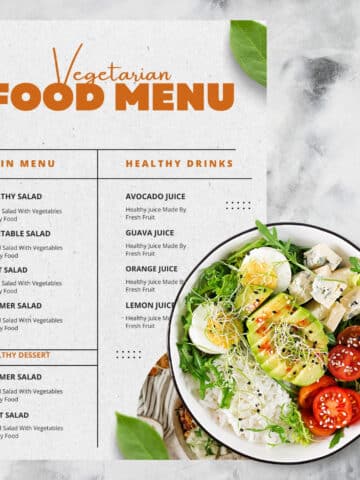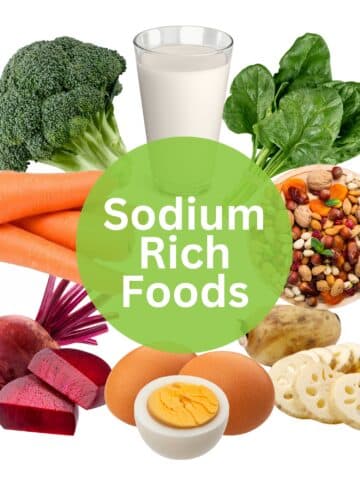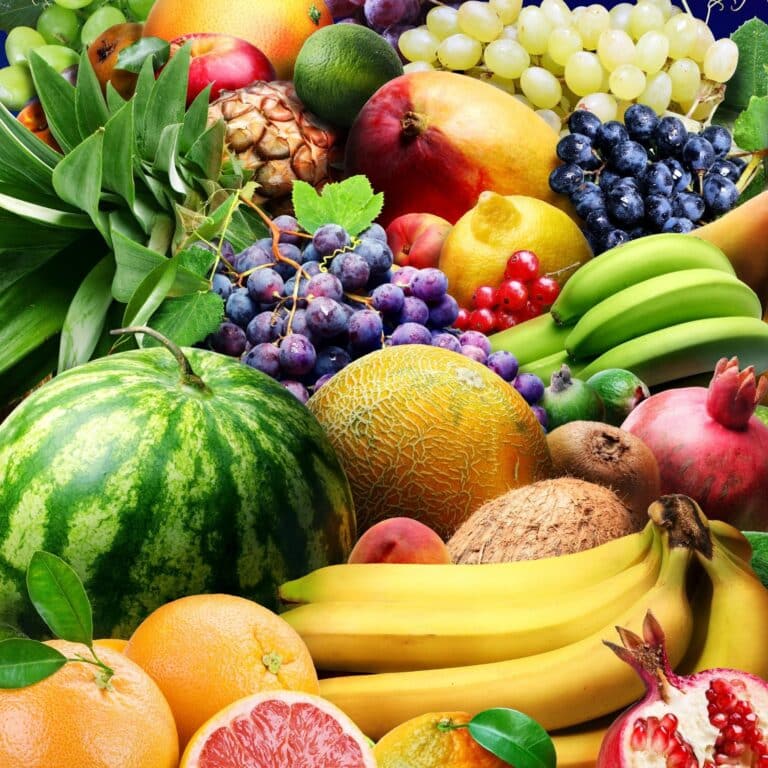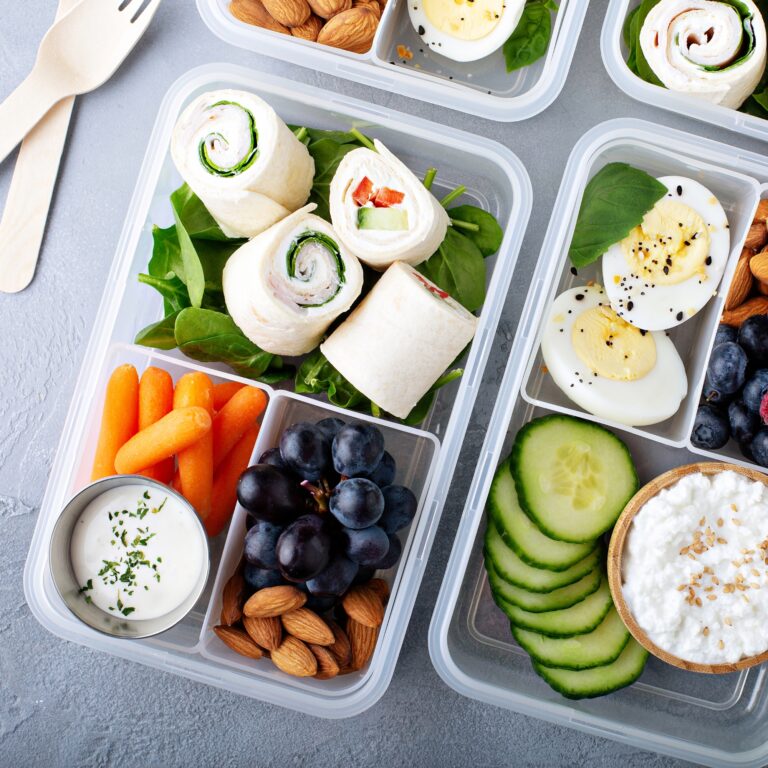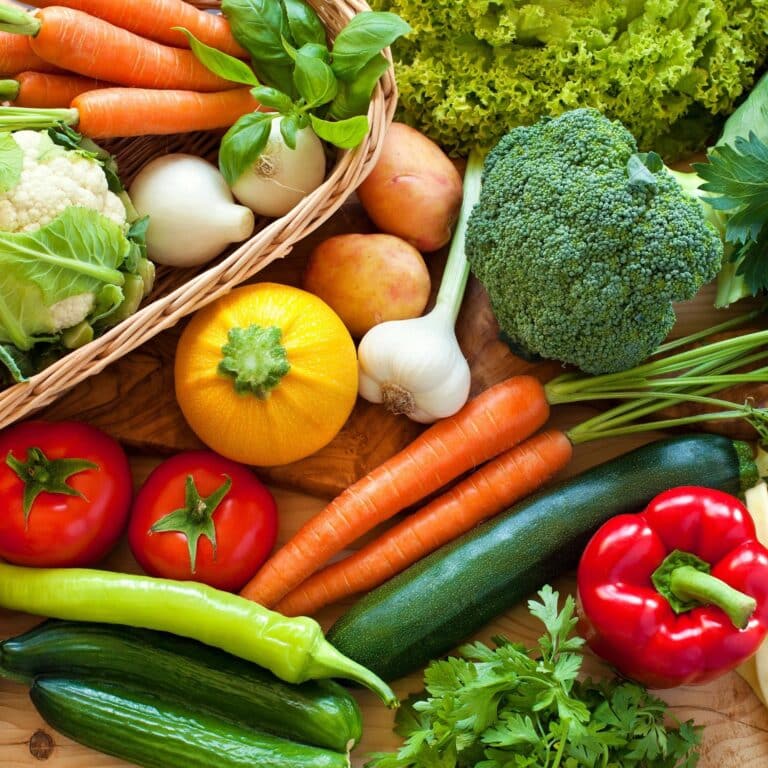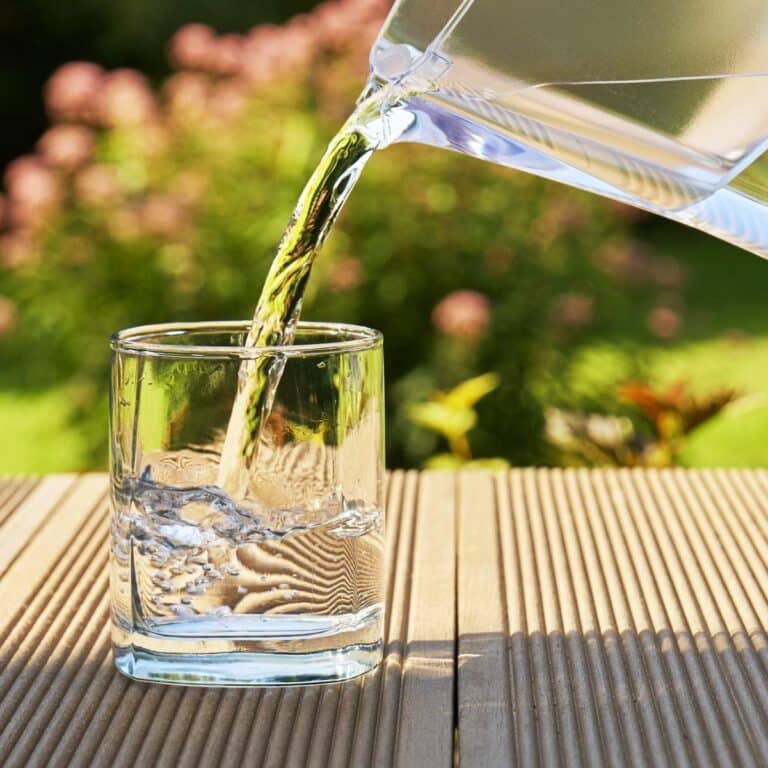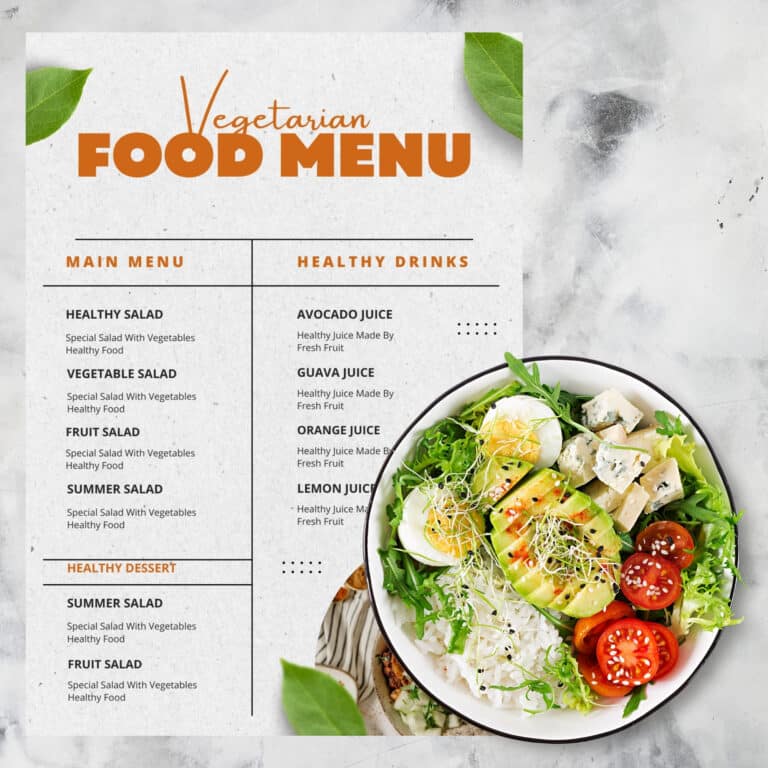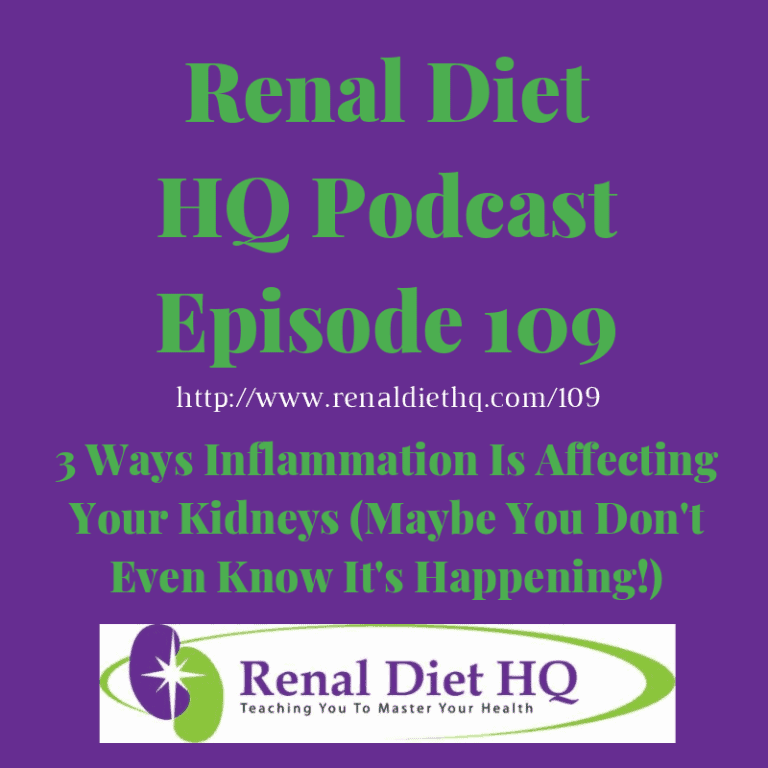Pre-dialysis Diet
Nearly one in seven adults in the US are estimated to have chronic kidney disease (CKD), and if you're part of this community, you're not alone in facing dietary changes. You've got a vital role in managing your health with a predialysis diet, it's designed to protect your kidneys by controlling certain nutrients and your current food intake.
This diet isn't just about restrictions, it's a new way to connect with your food and others who share your journey. You'll find camaraderie in swapping recipes and tips that cater to your needs. Together, you'll navigate this path, making choices that support your kidneys, and perhaps, prolong the time until dialysis may be needed.

Let's take this step towards a healthier you, with a focus on balance and community support.
Jump to:
- Key Takeaways
- Understanding Predialysis Nutrition
- Protein Intake Guidelines
- Managing Sodium Consumption
- Potassium Control Strategies
- Phosphorus Restriction Tips
- Fluid Intake Recommendations
- Sample Predialysis Meal Plan
- Monitoring Your Dietary Progress
- Adjusting Diet for Diabetes
- Additional Nutrition Considerations
- FAQs About the Predialysis Diet
- Understanding the Predialysis Diet
- Go to our renal diet meal plans here

Key Takeaways
- Predialysis nutrition focuses on restricting certain nutrients such as sodium, potassium, phosphorus, and protein to support kidney health and your renal meal plan.
- Following a kidney-friendly diet can slow disease progression, prevent complications, and enhance the quality of life for individuals with predialysis.
- Making informed choices about kidney-friendly foods, such as fresh, unprocessed foods low in sodium and fruits and vegetables lower in potassium, is essential in regular meals.
- Monitoring and adjusting the diet through regular lab tests and working closely with healthcare professionals can help ensure the effectiveness of nutritional adjustments on kidney function.
For More Recipes and Ideas --->> Get Your Free Meals and Recipes That Are Perfect for Pre-Dialysis Diets, Pre-Dialysis with Diabetes, or Dialysis Diets.
Understanding Predialysis Nutrition
As you navigate your predialysis journey, it's crucial to understand how restricting certain nutrients can benefit your kidney health. You'll need to make informed choices about kidney-friendly foods, focusing on those that are low in sodium, potassium, phosphorus, and protein when eating a kidney diet.
These dietary adjustments, tailored to your individual needs, can help slow down the progression of kidney disease and improve your quality of life. There are many health benefits to understanding the predialysis nutrition options.
Nutrient Restriction Benefits
During the early stages of kidney disease, restricting dietary sodium, potassium, phosphorus, and protein can help you manage your condition and potentially delay the onset of dialysis. By focusing on nutrient balance, you'll be able to maintain optimal health while your kidneys are under stress.
Meal preparation with different types of food becomes a pivotal skill in achieving this balance, ensuring that each dish contributes to your overall well-being without overburdening your kidneys.
Here are some benefits of nutrient restriction:
- Slows Disease Progression: Proper portion control and dietary education can slow the worsening of kidney function.
- Prevents Complications: By adhering to dietary recommendations, you minimize the risk of complications associated with advanced kidney disease.
- Enhances Quality of Life: Lifestyle modifications, including diet changes, can lead to a better quality of life by managing symptoms more effectively and help with the progression of kidney disease.
Kidney-Friendly Food Choices
To maintain your kidney health and manage early-stage kidney disease, you'll need to make smart food choices that are gentle on your kidneys. Understanding pre-dialysis nutrition involves learning about kidney friendly food choices, adhering to protein intake guidelines, managing sodium consumption, selecting low potassium food choices, and following phosphorus restriction tips. A kidney dietitian can tailor these guidelines to your unique needs and help with potential side effects and understanding primary outcomes.
| Nutrient | Tips for Management |
|---|---|
| Sodium | Choose fresh, unprocessed foods; read labels for sodium content |
| Potassium | Opt for fruits and vegetables that are lower in potassium |
| Phosphorus | Limit dairy and processed foods with added phosphates |

Protein Intake Guidelines
As you navigate your pre-dialysis diet for optimal health, understanding how much and what types of protein to include is crucial. Your body needs protein for repair and growth, but too much can overload your kidneys, so it's important to stick to your recommended daily limits and follow a restricted protein diet.
Let's explore your dietary protein intake, which protein sources are best for you, and how to maintain the right balance to support your kidney health on a low-protein diet. All chronic kidney disease patients in stages 3 - 5 are recommended to follow a dietary protein restriction.
Recommended Protein Types
When you're managing early-stage kidney disease, it's crucial to choose proteins that are easy on your kidneys. This includes lean cuts of meat, egg whites, and certain types of fish. Navigating your protein requirements can be challenging, but focusing on the right protein sources makes a difference.
Here are some guidelines to help you include kidney-friendly proteins in your diet:
- Opt for high-quality, protein-rich foods like chicken or turkey breast. These options offer substantial nutrition without overburdening your kidneys.
- Explore protein alternatives such as tofu or legumes. These options can provide necessary nutrients while being lower in phosphorus, which is beneficial for kidney health.
- Make protein substitutions wisely. For example, replace red meat with fish like cod or bass that are less taxing on your kidneys when it comes to renal health.
Daily Protein Limits
You'll need to tailor your daily protein intake to your specific stage of kidney disease, guided by your healthcare provider's recommendations. Paying attention to protein portioning and quality is crucial for your health.
Understanding protein absorption and how it affects your kidneys can help you make informed decisions about your diet. Diet suggestions can be one of the most important aspects of diet planning.
| Protein Aspect | Why It Matters |
|---|---|
| Protein Quality | High-quality protein is easier to absorb and may reduce kidney strain. |
| Protein Alternatives | Options like plant-based proteins can offer essential nutrients with less phosphorus. |
| Protein Timing | Distributing protein intake throughout the day can aid in better absorption and utilization. |
| Protein Portioning | Proper portion sizes help manage kidney workload and overall health. |
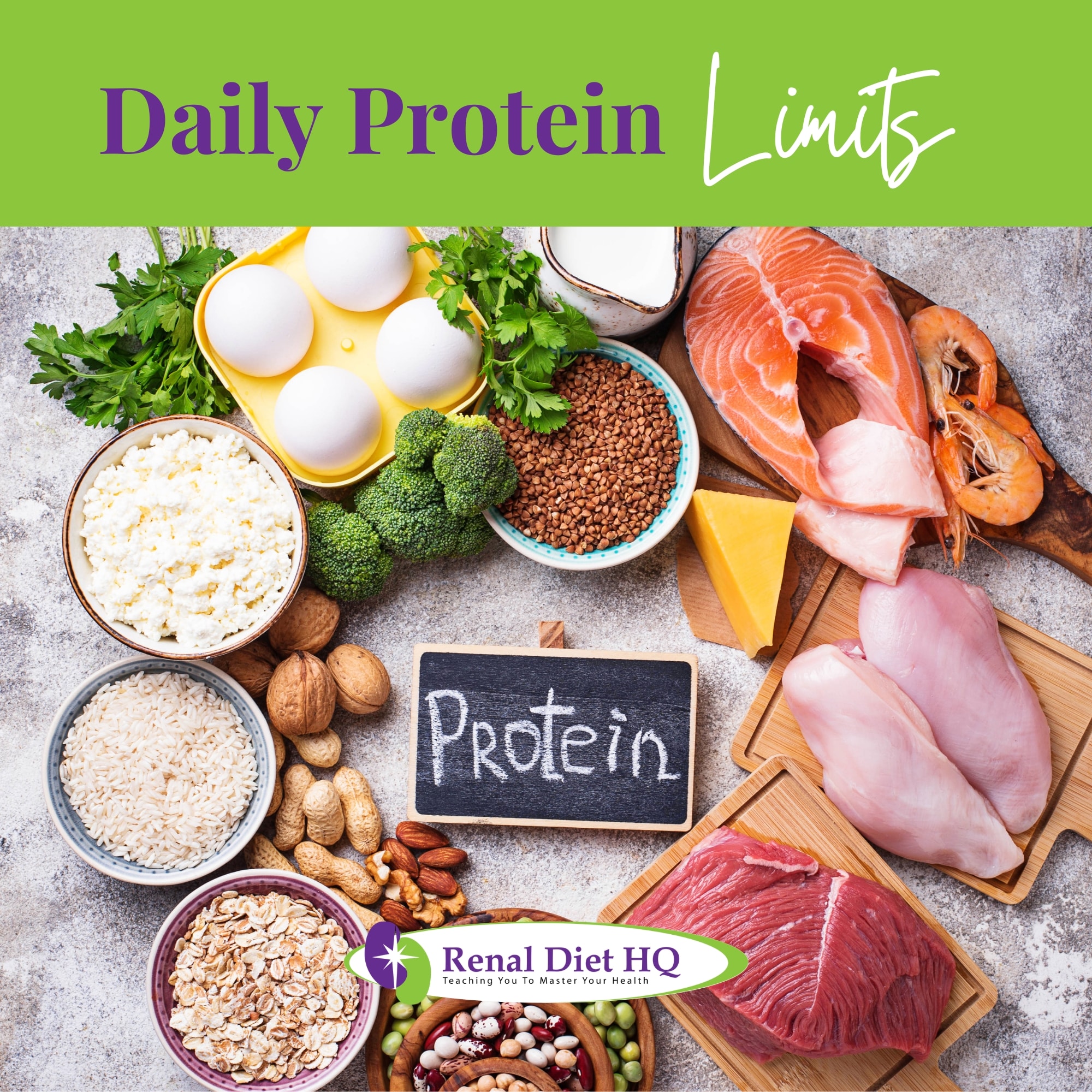
Managing Sodium Consumption
As you navigate your predialysis diet, it's crucial to manage your sodium intake to help protect your kidney function.
You'll want to prioritize low-sodium food choices and become adept at reading nutrition labels to keep track of your consumption.
Making these adjustments can significantly reduce the strain on your kidneys and contribute to your overall health.
Low-Sodium Food Choices
To effectively manage your sodium intake on a predialysis diet, you should prioritize fresh, unprocessed foods over canned or packaged options. Embrace the following sodium reduction tips:
- Use Low Sodium Seasoning: Opt for herbs, spices, and sodium-free condiments to flavor your meals instead of salt. This can include a squeeze of fresh lemon juice or a dash of dried herbs.
- Explore Sodium Substitutes: Consult with your healthcare provider about using potassium-based sodium substitutes, but be cautious as they may affect your kidney health.
- Adopt Sodium Conscious Cooking Techniques: Steam, grill, or bake your food without added salt, and enjoy the natural tastes of your ingredients.
Reading Nutrition Labels
Understanding nutrition labels is essential in managing your sodium intake and protecting your kidney health. It's about more than just reading comprehension; it's label interpretation that empowers you.
By enhancing your sodium awareness, you ensure each meal contributes positively to your well-being. Pay close attention to nutrient analysis and don't overlook portion control, it's key to staying within your daily sodium limits.
| Aspect | Why It's Important | What to Look For |
|---|---|---|
| Serving Size | Basis for the nutrient amounts listed | Compare to the amount you actually eat |
| Sodium Amount | Manage intake for kidney health | Look for low numbers per serving |
| % Daily Value | Understand nutrient contribution | Aim for 5% DV or less for low sodium |
| Ingredients List | Identify hidden sodium sources | Avoid items like "salt," "soda," "Na" |
| Certifications | Trust in lower sodium options | Labels like "low-sodium" or "no salt" |
Potassium Control Strategies
When managing your predialysis diet, it's crucial to monitor your potassium intake, as too much can strain your kidneys. You may or may not be prescribed a potassium restriction by your health care provider.
You'll need to select low-potassium foods, such as apples, carrots, and bread, while limiting those high in potassium like avocado and spinach.
It's essential to work closely with your health care provider to ensure you're balancing your diet without compromising your nutritional needs, even while meal prepping. You should also avoid salt substitutes that are made with potassium chloride.
Low-Potassium Food Choices
You'll need to focus on low-potassium food choices to keep your kidney's workload manageable as part of your predialysis diet. Here are some strategies to help you stick to your diet:
- Low Potassium Snack Options: Enjoy applesauce, grapes, or a handful of blueberries. These can satisfy your sweet tooth without overloading on potassium.
- Meal Prep Tips: Plan your meals around low-potassium staples like rice, pasta, and green beans. Prepping in advance helps you resist high-potassium temptations.
- Dining Out: When dining out on a predialysis diet, choose restaurants with options that align with your dietary needs. Don't hesitate to ask for meals to be customized.
Managing cravings can be tough, but incorporating low-potassium, fiber-rich foods helps you feel full and supports your dietary goals.
Monitoring Potassium Intake
Your body's potassium levels can be effectively managed by regularly checking food labels and keeping track of the potassium content in the foods you eat. Adopting potassium control strategies is crucial, especially when you're navigating a predialysis diet.
To align with potassium intake guidelines, prioritize low-potassium options and be mindful of potassium-rich foods and beverages that could disrupt your balance. Utilize potassium monitoring methods like maintaining a food diary or using apps that help you log your daily intake.
Phosphorus Restriction Tips
You need to be mindful of high-phosphorus foods, which can exacerbate kidney issues if you're facing chronic kidney disease.
Surprisingly, phosphorus isn't just in foods, it's also present in many beverages, so it's crucial to read labels carefully.
Identify High-Phosphorus Foods
In managing your predialysis diet, it's essential to steer clear of foods high in phosphorus, such as certain dairy products and processed meats, to maintain optimal kidney function. Identifying phosphorus sources is a key step in managing phosphorus levels and supporting your health.
Here's how you can exercise dietary phosphorus control:
- Limit Dairy Intake: Choose phosphorus-rich food alternatives like almond or rice milk over regular milk.
- Process with Caution: Avoid processed foods and opt for fresh, whole options.
- Meaty Matters: Replace organ meats with lean cuts of poultry or fish.
Phosphorus in Beverages
Many beverages contain surprising amounts of phosphorus, so you'll need to be vigilant about what you drink to manage your kidney health effectively. Phosphorus content in popular beverages can impact your kidney function negatively.
Understanding the alternatives to high phosphorus beverages is key. Here's a table to help you choose wisely and maintain your phosphorus and bone health in predialysis.
| Beverage Type | Strategy for Reducing Phosphorus Intake |
|---|---|
| Colas and sodas | Opt for clear or lemon-lime varieties |
| Enhanced water | Prefer plain or natural flavored water |
| Iced teas and coffees | Limit intake; choose herbal teas |
| Beer and ale | Generally avoid or consume in moderation |
| Chocolate drinks | Switch to vanilla or strawberry flavors |
Fluid Intake Recommendations
As you manage your predialysis diet, it's crucial to monitor your daily fluid intake to ensure hydration without overburdening your kidneys.
You'll need to recognize the signs of fluid retention and adjust your fluid consumption accordingly.
Always consult with your healthcare team to determine the right balance for your individual needs.
Monitor Daily Liquids
You'll need to keep a close eye on your daily fluid consumption to maintain your kidney health and prevent overburdening your system. Fluid intake tracking is vital to prevent fluid retention and ensure you're following the right fluid intake guidelines.
Here are some key hydration tips to consider:
- Measure Your Drinks: Use a measuring cup or marked water bottle to track your fluid intake accurately.
- Recognize Signs of Dehydration: Look out for symptoms such as dry mouth, fatigue, and dark urine.
- Consult Regularly: Stay in touch with your renal dietitian to adjust your fluid intake as needed.
Hydration Without Overload
Balancing your fluid intake is crucial, too much can strain your kidneys, yet too little may lead to dehydration. It's all about fluid intake management, preventing dehydration while also avoiding fluid overload.
You're part of a community striving for health, and learning the importance of monitoring your fluid intake is key. Let's look at personalized fluid recommendations tailored just for you:
| Factor | Recommendation |
|---|---|
| Individual Needs | Consult with your doctor for a tailored fluid allowance |
| Symptoms Monitoring | Watch for swelling or shortness of breath |
| Daily Intake Tracking | Keep a record of your fluid consumption |
| Fluid Overload Prevention | Limit salty foods that increase thirst |
Sample Predialysis Meal Plan
You may be wondering what a predialysis meal looks like in practice.
Let's look at examples of balanced nutrition and some kidney-friendly recipes tailored for you.
These meal ideas aim to keep your kidney health in check without sacrificing flavor or variety.
Balanced Nutrition Examples
To maintain your health while managing early kidney disease, a balanced predialysis meal plan is essential. This plan should incorporate low-potassium fruits and vegetables, lean proteins, and heart-healthy fats. Meal preparation and portion control are your allies in managing your condition.
Seek dietary counseling to personalize your plan, keeping nutrient tracking at the forefront to avoid overloading your kidneys. And don't shy away from food substitutions to keep your meals interesting and varied.
Here's a sample day:
- Breakfast: Scrambled eggs with green beans and a slice of whole-grain toast, served with a cup of blueberries.
- Lunch: Grilled chicken salad with lettuce, cucumbers, and radishes, dressed with olive oil and vinegar.
- Dinner: Baked fish with a side of rice and steamed carrots, followed by applesauce for dessert.
Kidney-Friendly Recipes
With your predialysis meal plan in mind, let's dive into some kidney-friendly recipes that cater to your nutritional needs without sacrificing flavor. When preparing meals, utilize cooking techniques that enhance natural tastes, such as grilling or steaming. Keep meal prep tips handy, organize your kitchen for efficiency and batch-cook to save time.
While grocery shopping, opt for fresh produce and read labels to choose low-sodium alternatives. Portion control strategies are essential, use smaller plates and measure servings to manage your intake.
For a treat, explore kidney friendly dessert ideas that are low in phosphorus and potassium. Remember, your meals can be both nourishing and enjoyable, helping you feel connected and cared for on your journey to better kidney health.
Monitoring Your Dietary Progress
As you navigate your predialysis diet, it's crucial to keep track of your nutrient intake to ensure you're adhering to your dietary restrictions. Watching your intake of protein on this kidney diet is crucial to your success. If you are diabetic, blood glucose control is also very important.
Regular lab tests will provide concrete feedback on how your diet is impacting your kidney function.
Tracking Nutrient Intake
Regarding your predialysis diet, it's crucial you're consistently monitoring your intake of key nutrients to ensure you're staying on track with your dietary goals. By tracking nutrient intake, you're actively engaging in the management of your health, experiencing the benefits of nutrient restriction firsthand.
This proactive approach includes:
- Reading Nutrition Labels: Become skilled at identifying sodium content to manage sodium consumption effectively.
- Monitoring Potassium Intake: Keep a log of potassium-rich foods and work with your dietitian to adjust portions as necessary.
- Managing Sodium Consumption: Use a food diary or app to track daily sodium intake and make informed decisions about what to eat while dealing with renal disease.
Regular Lab Tests
To keep tabs on how well your predialysis diet is working, regular lab tests are vital in measuring the effectiveness of your nutritional adjustments on kidney function. These tests are your guideposts, signaling when you need to tweak your diet plan. By monitoring kidney function through these lab tests, you'll see the direct impact of your dietary choices.
Understanding lab test frequency and interpreting lab results can be complex, but you're not alone. Your healthcare team is there to decode the numbers and help you adjust your diet plan accordingly. Open communication with them is crucial, they're your partners in health.
Together, you'll tailor your diet to your body's needs, ensuring you stay on the right track for maintaining kidney health and overall well-being.
Adjusting Diet for Diabetes
If you're managing both diabetes and early-stage kidney disease, it's essential to balance your blood sugar while adhering to nutrient limits that protect your kidneys as you add to your diabetic diet.
You'll need to work closely with your dietitian to adjust your meal plan, focusing on diabetic-friendly foods that also meet the restrictions of your predialysis diet.
Together, you can ensure that your diet supports your overall health without overburdening your kidneys.
Balancing Blood Sugar
You'll need to adjust your diet to manage blood sugar effectively if you have diabetes in addition to early-stage kidney disease. Balancing your blood sugar is a critical step, as it can help preserve kidney function and manage high blood pressure, which are both crucial for your wellbeing.
Here are some strategies:
- Collaborate with a healthcare professional to tailor your calorie intake strategies, ensuring they align with your energy needs and blood sugar management goals.
- Opt for low-sodium food choices to reduce the risk of high blood pressure, which can strain your kidneys further.
- Monitor and control your blood glucose levels diligently to maintain optimal diabetes and CKD management.
Together, these actions support your health and help foster a sense of belonging in your journey with diabetes and CKD.
Diabetic-Friendly Nutrient Limits
As you manage your diabetes alongside early-stage kidney disease, it's essential to set specific limits on nutrients like sodium, potassium, phosphorus, and protein to maintain your kidney health. Opting for diabetic-friendly carbohydrate choices helps with managing blood sugar levels while safeguarding your kidneys.
Portion control tips can be a game-changer, ensuring you're eating enough but not too much, especially of foods high in potassium and phosphorus.
Incorporating diabetic-friendly snack options will keep you satisfied between meals without overloading on sugar or harmful nutrients.
Above all, don't forget the importance of regular exercise, which is key to managing diabetes and supporting overall kidney function.
It's a balance, but with the right guidance, you can protect your health and feel like you belong to a community that understands your journey.
Additional Nutrition Considerations
As you manage your pre-dialysis diet, keeping a close eye on your fluid intake is key to avoiding complications associated with fluid overload.
You'll also need to consider whether you're getting enough vitamins, as certain restrictions can lead to deficiencies.
Your healthcare provider can guide you on appropriate supplementation to ensure you're meeting your nutritional needs without overburdening your kidneys.
Fluid Intake Monitoring
In managing your predialysis diet, it's crucial to monitor your fluid intake, as even slight changes can signal shifts in kidney function. Achieving fluid intake goals is vital to your health, even on a diabetic diet.
Here's how to stay on top:
- Track Your Fluid Intake: Keep a daily log of your fluid intake to ensure you're meeting, but not exceeding, your individualized goals when looking at renal diets or a healthy diet.
- Watch for Signs of Dehydration: Look out for symptoms such as dry mouth, dizziness, or fatigue which may indicate you're not getting enough fluids.
- Understand the Importance of Hydration: Proper hydration helps to maintain kidney function and manage thirst without overloading your system. This is important for people with kidney disease.
Vitamin Supplementation Needs
You may need to take specific vitamin supplements to ensure your predialysis diet meets all your nutritional needs. A balanced intake of vitamins is crucial, as kidney disease can affect nutrient absorption, leading to vitamin deficiency. It's essential to discuss dietary supplements and vitamin recommendations with your healthcare provider, as they can tailor advice to your individual needs. Looking to add some of these to your meals? We have a delicious low potassium pasta sauce, perfect to replace tomato sauce in any dish.
Here's a table with some vitamin rich foods and considerations:
| Vitamin | Rich Foods | Considerations |
|---|---|---|
| A | Carrots, Sweet Potatoes | Watch for high potassium |
| C | Bell Peppers, Citrus Fruits | Limit if advised |
| D | Fortified Cereals, Fatty Fish | Monitor blood levels |
| B-Complex | Whole Grains, Lean Meats | Balance with kidney function |
| E | Nuts, Seeds | Account for phosphorus content |
FAQs About the Predialysis Diet
You'll need to choose kidney-friendly snacks, manage fluid intake, and control phosphorus in your meals.
It's essential to meet your energy requirements while considering nutritional supplements.
Focus on a balanced diet tailored to your health needs, ensuring you're not alone in this journey.
With the right guidance, you can maintain your well-being and feel supported by a community that understands your challenges and the CKD diet.
Understanding the Predialysis Diet
Embracing a predialysis diet is like rewinding the clock on kidney stress, every mindful bite aids in managing your condition. Stick to your protein, sodium, potassium, and phosphorus guidelines. Remember, your meal plan is your shield against dialysis.
Track your meals, tweak as necessary, and if you're juggling diabetes, adjust with care. This isn't just a diet; it's a lifeline and a valuable approach to nutrition.
Keep learning, keep adjusting, and keep your kidneys in the game for the long run. Whether you're dealing with renal failure, dialysis treatments, or you're trying to understand a new food plan, understanding the pre-dialysis diet is important.
Go to our renal diet meal plans here
Preferred Reading!


